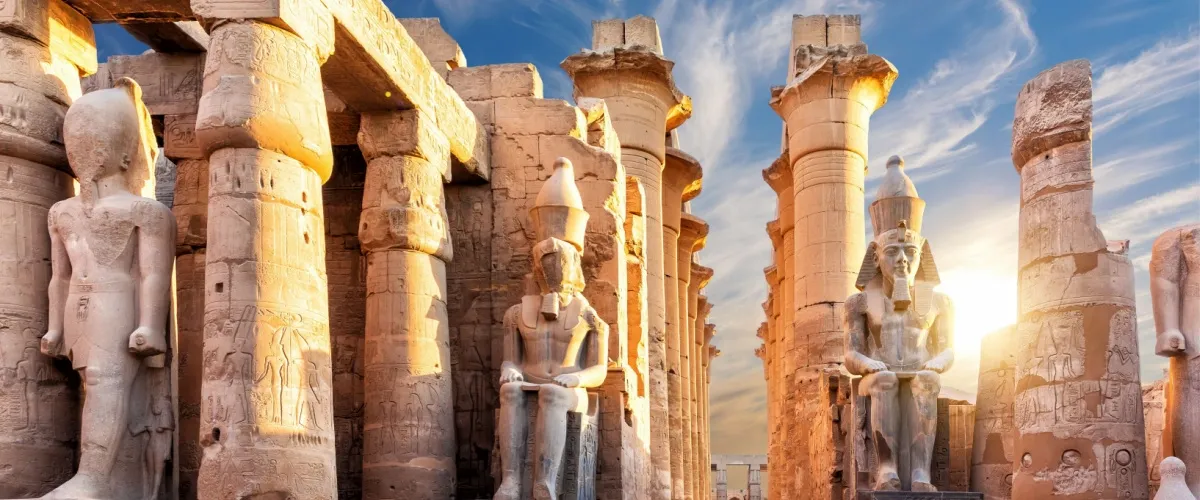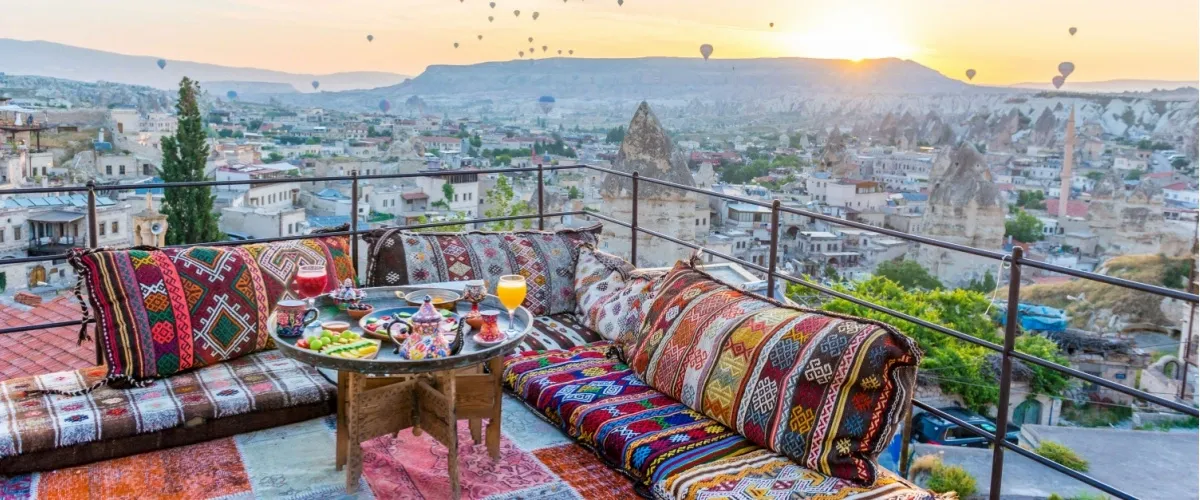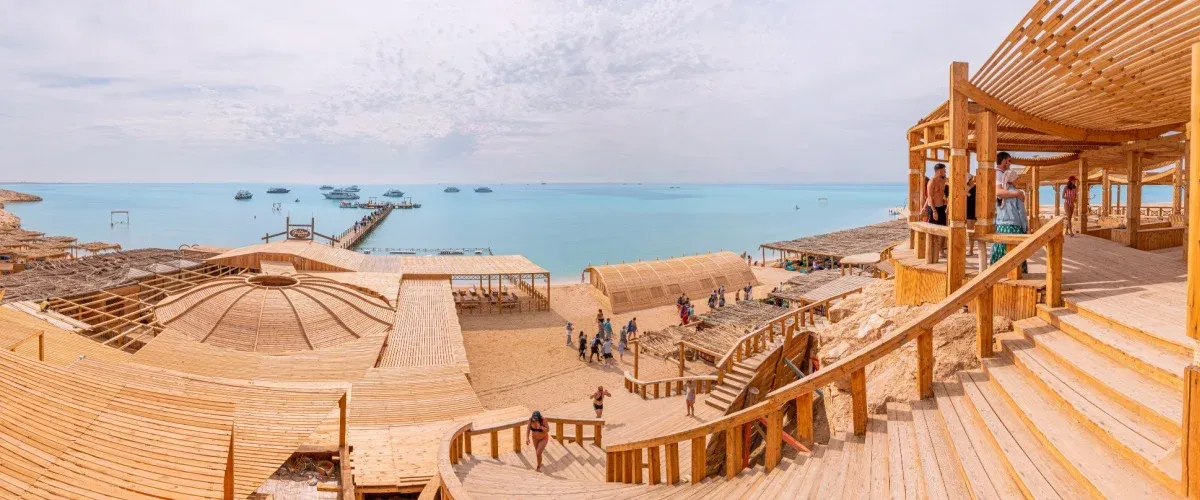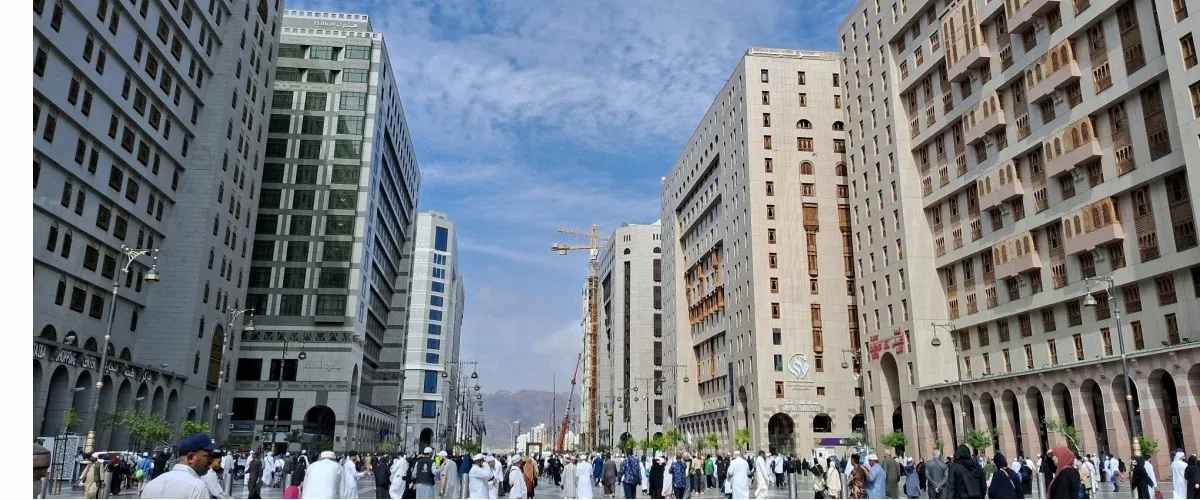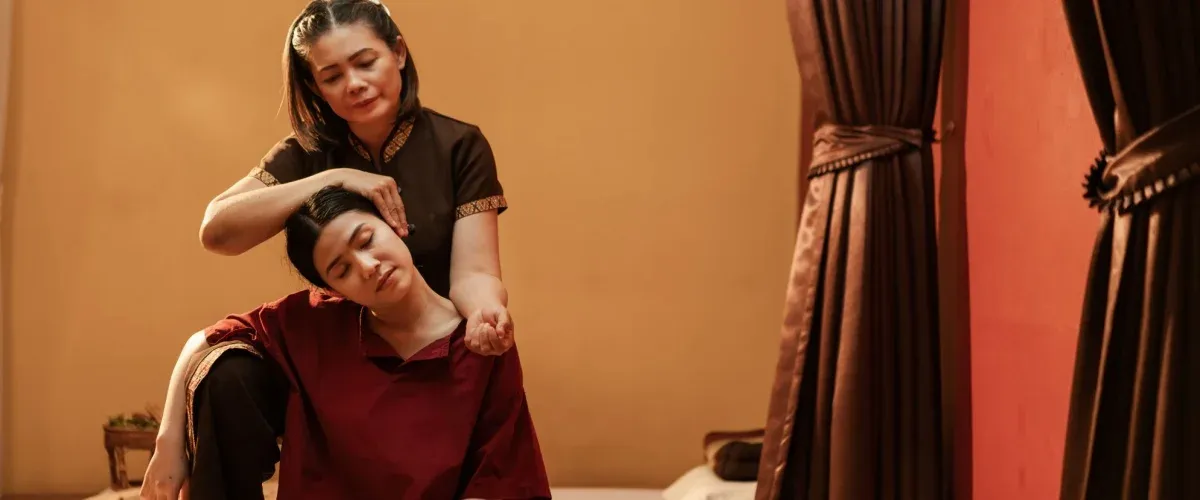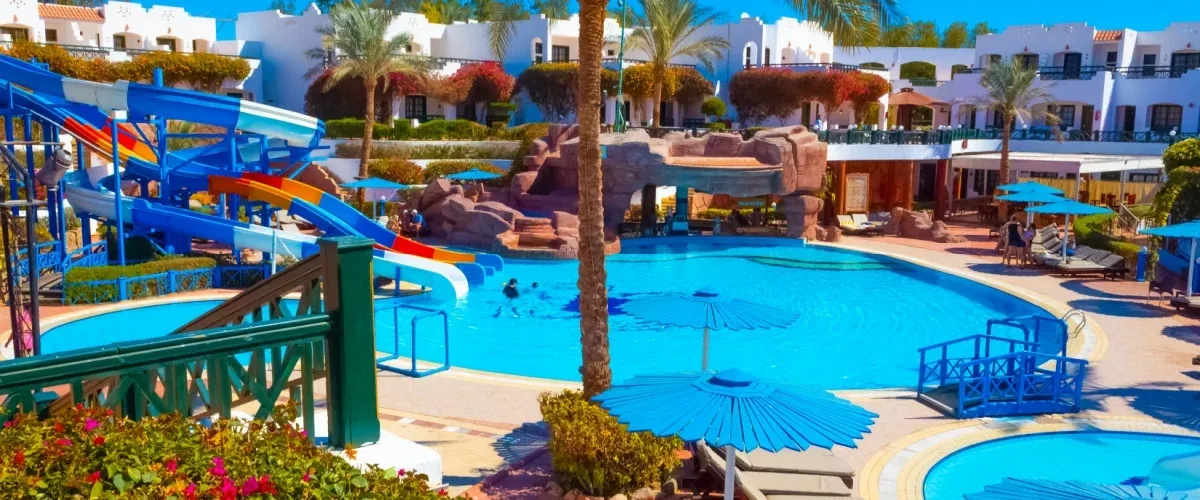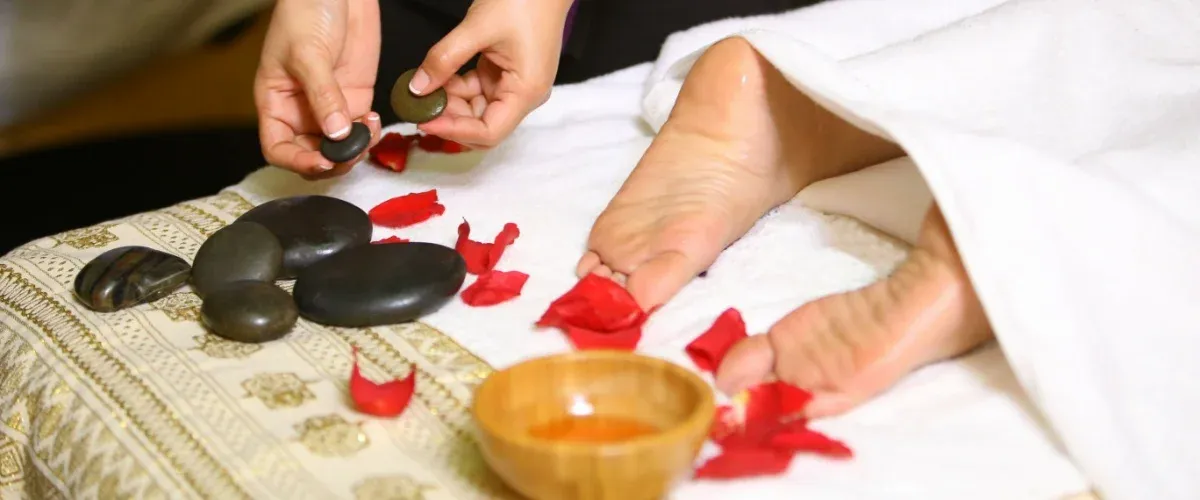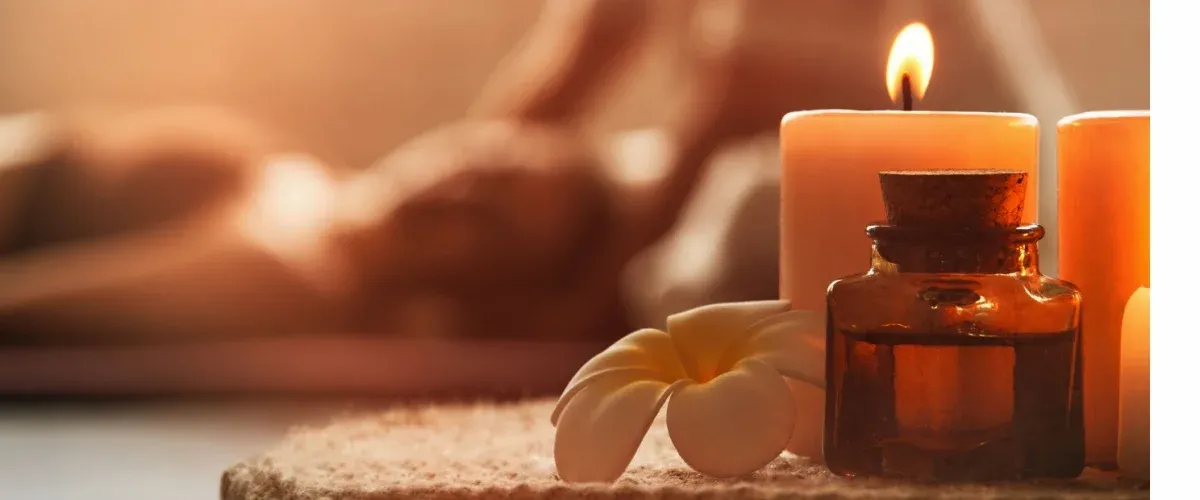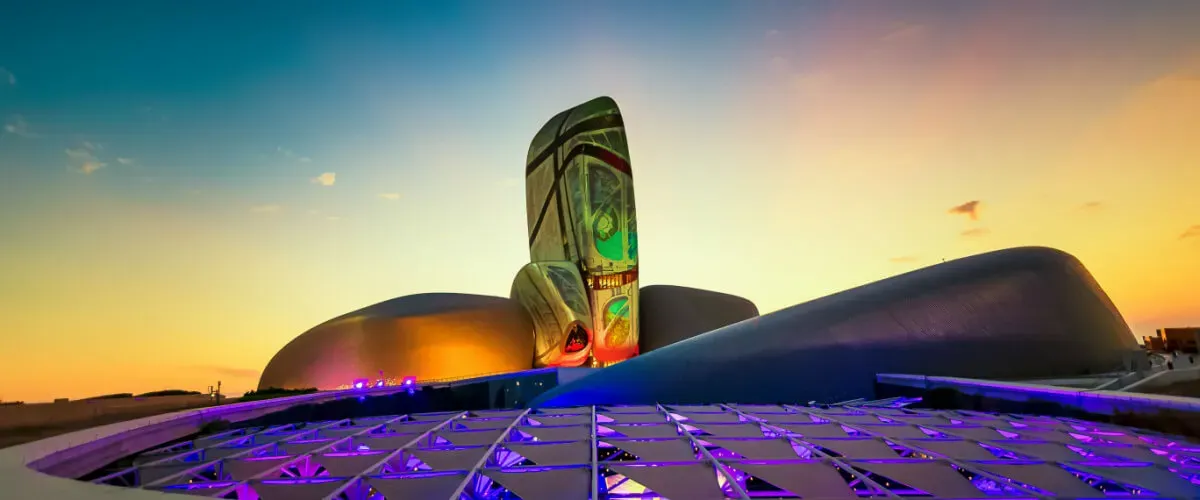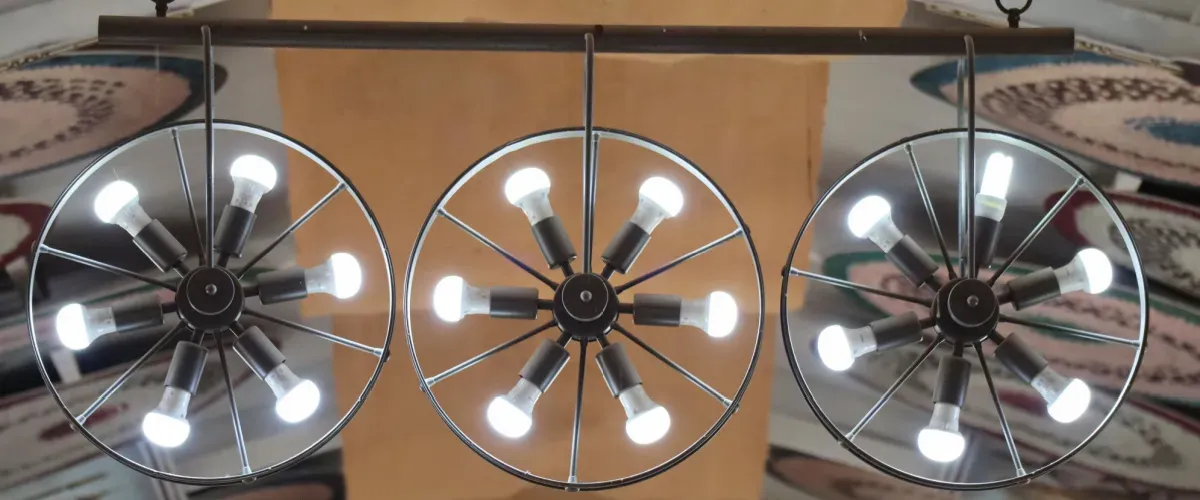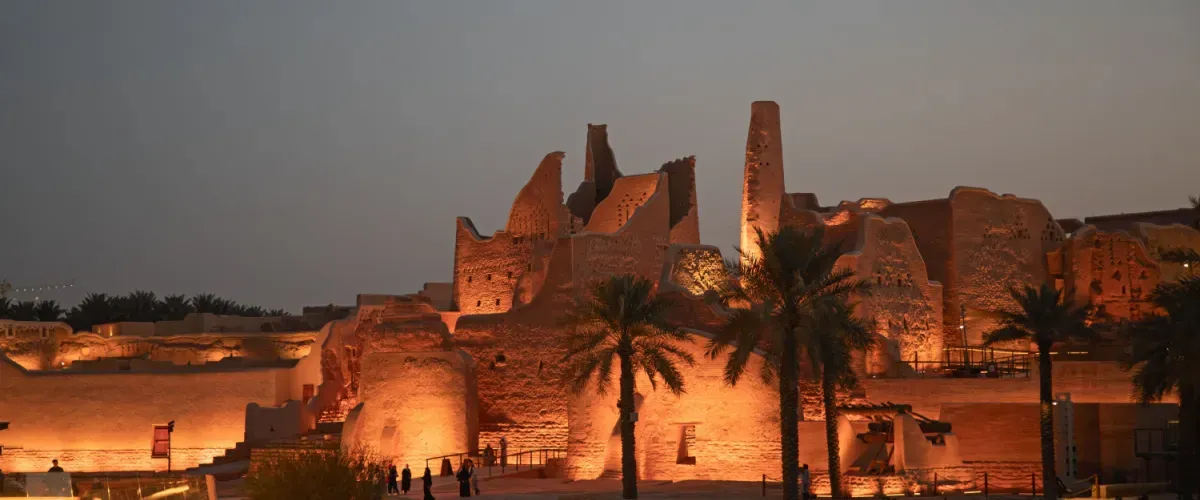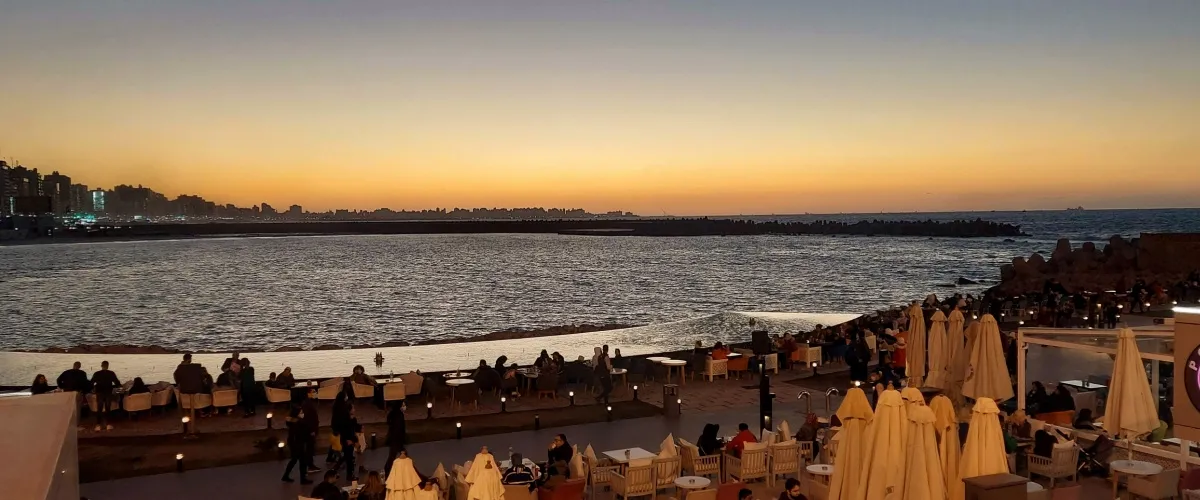Undertake a journey to explore the captivating places to visit in Luxor, the living testament to Egypt's timeless splendor! Nestled along the banks of the majestic Nile, Luxor beckons you with its unrivaled blend of history and charm. Explore the fabled Valley of the Kings, where over 60 royal tombs, including Tutankhamun's, whisper tales of an opulent past. Step into the iconic Karnak Temple, a colossal complex that took over 2,000 years to build, dedicated to the divine triad of Amun, Mut, and Khonsu. As you wander through Luxor's ancient streets, each stone seems to echo with the footsteps of pharaohs and the murmurs of a civilization that once ruled the world. Unveil the mysteries of Luxor, where every corner holds a piece of the rich tapestry of Egypt's history.
Top Places to Visit in Luxor: Embark on a Nile Odyssey in Luxor
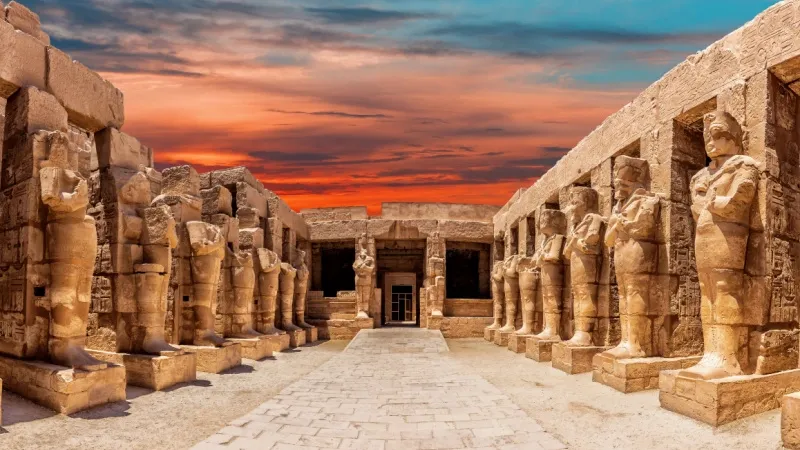
Cruise down the historic Nile to dive deep into the exploration of the places to visit in Luxor, treasure troves of archaeological wonders awaiting your discovery. Witness the sunrise illuminating the Temple of Hatshepsut, a marvel carved into the cliffs of Deir El Bahari. Feel the ancient spirits at the Luxor Temple, where the grand avenue of sphinxes once connected it to Karnak, forming a sacred path. Dive into the bustling labyrinth of the Luxor Souq, where the air is filled with the aroma of spices and the vibrant colors of handmade crafts. Luxor, with its open-air museum ambiance, invites you to unravel the pages of Egypt's past, making it an irresistible destination for every history enthusiast and adventure seeker.
- Karnak Temple
- The Temple of Luxor
- The Valley of the Kings
- The Temple of the Queen Hatshepsut
- The Valley of The Nobles
- The Valley of the Queens
- Deir El Madina
- RAMESSEUM lll Temple
- Colossi Of Memnon, West Bank
- Luxor Museum
1. Karnak Temple: A Symphony of Temples

Karnak is a complex of sanctuaries, kiosks, pylons, and obelisks dedicated to the Theban triad and pharaohs. Covering over 2 sq km, this boasts to be one of the best places to see in Luxor. It contains about 10 cathedrals and is home to the Temple of Amun, the local god. The complex was the most important place of worship in Egypt during the New Kingdom, built, added to, dismantled, restored, enlarged, and decorated over nearly 1500 years.
The Temple of Amun-Ra, one of the world's largest religious complexes, is dominated by the hypostyle hall and is surrounded by the houses of Amun's wife Mut and their son Khonsu. The Mut Temple Enclosure and Montu Temple Enclosure honor the local Theban war god. The 3km paved avenue linking the Temple of Amun with Luxor Temple is now being cleared. The temple is most beautiful in the early morning or late evening with the light and sound show. It is recommended enjoy the show as it is among the best things to do in Luxor and make sure to visit multiple times to fully appreciate its ancient remains.
Location: Maadad ad-Karnak Street, East Bank, Luxor
Built In: c. 1970 BCE
Built By: Senusret I–Nectanebo I
Opening Hours: 6:00 am to 10:00 pm
Time Needed: 2-3 hours
Entry Fee: Approximately USD 13 or INR 1,000
Special Attractions: Great Temple of Amun, the Temple of Khons and the Festival Temple of Tuthmosis III Colossal statues of Ramses II, Hypostyle Hall Maadad ad-Karnak Street, East Bank, Luxor
Karnak Light & Sound Show:
Timings: 6 pm to 8 pm
Languages: Arabic, English, and German
Charges: *Subject to change
- Adults above 12 Years- $20
- Children Below 12 Years- $11
2. The Temple of Luxor: Explore the Hidden Treasures
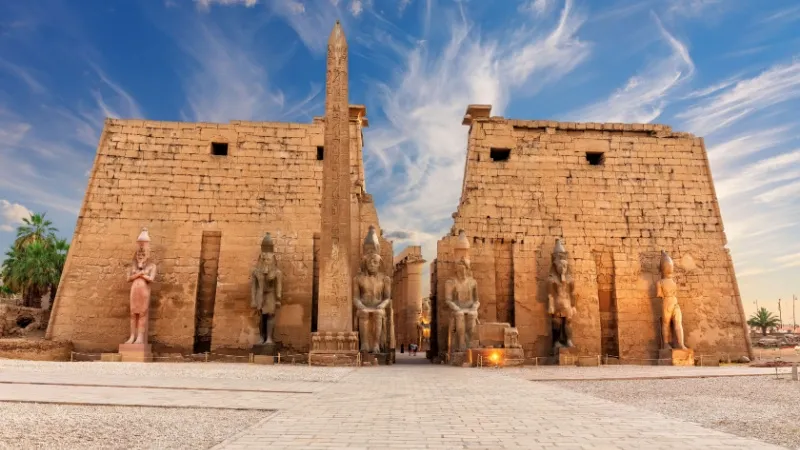
The Temple of Amun of the Opet, built by New Kingdom pharaohs Amenhotep III and Ramses II, is a prominent monument in modern Luxor and is among the top Luxor places to see. It served as a venue for annual Opet celebrations, where statues of Amun, Mut, and Khonsu were brought from Karnak, one of the best places to visit in Egypt. The temple was expanded by Amenhotep III and later expanded by Tutankhamun, Ramses II, Alexander the Great, and various Romans. The Romans built a military fort around the temple, which was later corrupted to give modern Luxor its name. During the Christian era, the temple transformed into a church, while in the Islamic period, the Mosque of Abu el-Haggag was built within the complex grounds. The temple was surrounded by a warren of mud-brick houses, shops, and workshops, which now lie under the modern town. Excavation works began in 1885, revealing the temple's remains and a mosque. Beyond the Hypostyle Hall is the first room of the original Opet temple, with a central chamber depicting Roman officials.
Location: Luxor City, Luxor, Luxor Governorate 1362501, Egypt
Architects: Amenhotep III, Amenhotep II
Opened: 1400 BC
Founded: 1400 BCE
Architectural Style: Ancient Egyptian architecture
Opening Hours: 6 am to 10 pm
Time Needed: 2-3 hours
Entry Fee: For foreigners- EGP 180 (US$6) per person, and for Egyptians/Arabs- EGP 40 (US$1) per person
Special Attractions: Karnak Temple, Ramesseum Temple, Habu Temple, Mut Temple, Hatshepsut Temple, Precinct of Amun-Re, Grand Mortuary Temple of Amenhotep III, Abou al-Haggag Mosque
Suggested Read: Restaurants in Luxor: Indulge Yourself in Luxor’s Culinary Fete
3. The Valley of the Kings: Walk with Pharaohs in Heart of Egypt
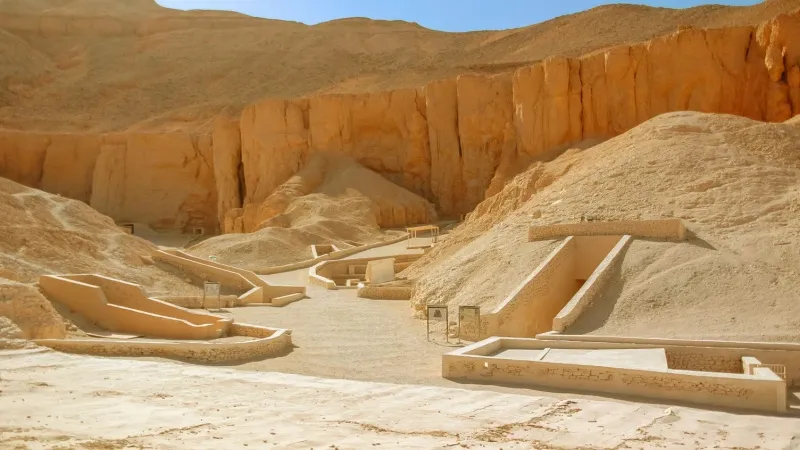
The Valley of the Kings, located on the west bank of the Nile River near Luxor, is among the popular places to visit in Luxor Egypt for exploring ancient Egyptian history. It is home to nearly 70 tombs, some of which are open to visitors on a rotating schedule for restoration. The valley is not very impressive at first glance but offers an opportunity to see the ornate decorations and the painstaking process of creating them. During the New Kingdom's period (1550-1070 BCE), the Valley of the Kings was the major burial ground for most royal pharaohs, including Tutankhamun, Seti I, and Ramses II.
The tombs of most 18th, 19th, and 20th dynasties queens, high priests, and other elites were also found there. Tutankhamun's tomb is the only one discovered with its contents still inside, and his contents are now on display in the Grand Egyptian Museum in Cairo. Building tombs and mummification were part of the ancient Egyptians' belief for afterlife and to preserve the body of the deceased and allow their eternal soul to wake up again in the afterlife. Ancient Egyptian pharaohs are buried with furniture, clothes, jewelry, food, drink, wine, beer, and precious objects that helped the deceased pass to the afterlife and achieve eternity.
Location: Luxor, Luxor Governorate 1340420, Egypt
Official Name: Ancient Thebes with its Necropolis
UNESCO World Heritage Site Since: 1979
Built In: c. 16th century BC
Built For: The New Kingdom (The Egyptian Empire) Between 16th century BC and the 11th century BC that covers Eighteenth, Nineteenth, and Twentieth Dynasties. Through radiocarbon dating, the establishment of the New Kingdom has been placed between 1570 BC and 1544 BC.
Opening Hours: 6 am to 10 pm
Time Needed: 2-3 hours
Entry Fee: Passes (with validity of 5 days), photography pass no longer exists
- Luxor Standard Pass- $130 for adults and $70 for students with valid ID cards
Covers: East and West Bank sites except Seti I and Nefertari tombs
- The Luxor Premium Pass- $250 USD for adults and $130 USD for students with a valid ID card
Covers: East and West Banks archaeological sites including tombs of Seti I and Nefertari
For 3 Tombs Visit: $20 USD (620 EGP) per person (the entrance ticket plus the tram)
Three Tombs + Three Other Tombs: $ 100 USD (3100 EGP) per person
Best Tombs:
- KV1 – Ramesses VII
- KV2 – Ramesses IV
- KV6 – Ramesses IX
- KV8 – Merenptah
- KV11 – Ramesses III
- KV14 – Tausert-Setnakht
- KV15 – Seti II
- KV16 – Ramesses I
- KV43 – Thutmose
- KV47 – Siptah
- KV9 – Ramesses V & VI
- KV17 – Seti I 1,800 EGP
- KV62 – Tutankhamun
4. The Temple of the Queen Hatshepsut: Temples, Tombs, and Triumphs
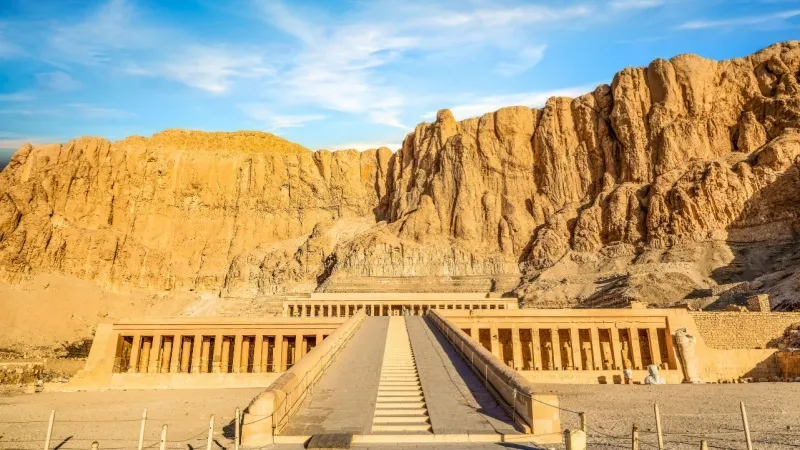
Nestled near Luxor's striking limestone cliffs, Deir Al Bahri boasts the mesmerizing Temple of Hatshepsut—a crown jewel of ancient Egypt. Crafted by the courtier Senenmut, this temple, named Djeser-djeseru (Most Holy of Holies), unfolds a riveting history. Marvel at the rising central axis and three-part plan as you explore. Over centuries, it endured transformations—vandalized by Tuthmosis III, adapted by Akhenaten, and repurposed as a Christian monastery, Deir Al Bahri. Today, its grandeur persists. As we all know, Luxor is among the most romantic destinations when it comes to honeymoon in Egypt. You can wander through the great court, trace ancient tree roots, and ascend to well-preserved terraces adorned with the Chapel of Anubis and the Hathor Chapel with your beloved and delve into the ancient charm of this attraction. A morning visit unveils this archaeological wonder bathed in the soft glow of sunrise.
Location: Al Qarna, Luxor Governorate 1340420, Egypt
Builder: Unclear, possibly: Senenmut, Overseer of Works; Hapuseneb, High Priest of Amun
Function: Mortuary temple
Material: Limestone, sandstone, granite
Opening Hours: 6 am 5 pm
Time Needed: 2-3 hours
Entry Fee:
Special Attractions
5. The Valley of The Nobles: Unveiling the Soul of Ancient Egypt
.webp)
The Tombs of the Nobles, located in Luxor's West Bank, is a lesser known but better-preserved site with around 400 tombs dating from the 6th dynasty to the Ptolemaic era. The Tombs of Sennofer, Rekhmire, Khonsu, Benia, Menna, and Nakht are particularly impressive, with detailed paintings depicting men's daily lives, work, and family life. Nestled in the rugged beauty of Luxor's West Bank, the tombs serve as silent witnesses to centuries gone by, narrating the noble deeds and daily lives of those laid to rest. This archaeological gem offers a poignant insight into the legacy of Luxor's aristocracy.
Location: Kharga Oasis Section, Luxor Governorate 1340420, Egypt
Function: Burial site for nobles, preserving their tombs and vivid frescoes.
Material: Limestone cliffs and elaborate tomb structures.
Opening Hours: 8 am to 6 pm
Time Needed: 2-3 hours to explore thoroughly.
Entry Fee: Included in general West Bank or Luxor pass.
Special Attractions: Elaborate tombs with vibrant frescoes showcasing the lives of ancient Egyptian nobility.
Suggested Read: Best Museums in Egypt: Museums Unveiling Millennia of Civilization
6. The Valley of the Queens: A Visual Feast for the Curious
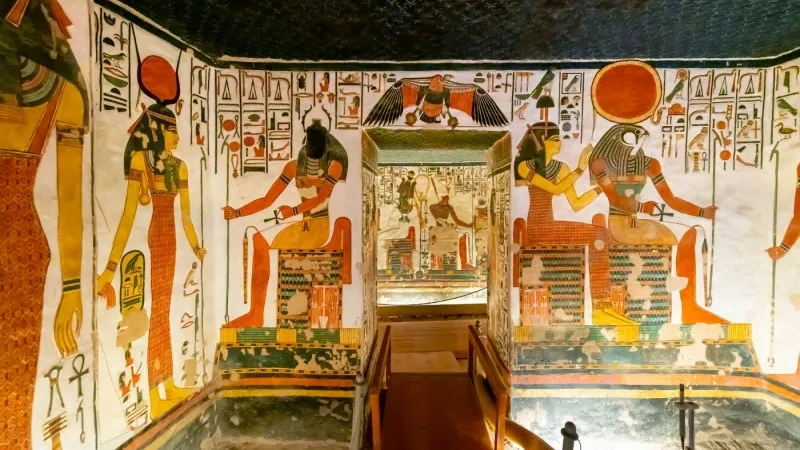
The Valley of the Queens is a rocky, sunbaked valley with simple stone entrances leading into tombs that you can see from the hot air balloon Luxor as well. It was intended to hide tomb entrances to preserve them from looters, but the builders were successful in hiding them for millennia. The tombs were used for queens, princes, princesses, and other members of the royal family. Among the best places to visit in Egypt, the tombs are those of the sons of Ramesses III, the building of Medinat Habu. Medinat Habu, commissioned by Ramesses III, is a much more impressive sight with its pylon and many walls still intact and more original painting visible on its carved surfaces. Nestled beneath the Theban Hills, the Valley of the Queens is a poignant testament to the regal women of ancient Egypt, cradling the final resting places of queens, princes, and high-ranking officials. The tombs, adorned with exquisite artwork and hieroglyphics, transcend time, immersing visitors in the grandeur of ancient Egyptian royalty.
Location: PHHV+C5M, Luxor, Luxor Governorate 1340410, Egypt
Builder: Queens, princes, and high-ranking officials of ancient Egypt
Function: Royal burial ground for queens and selects dignitaries
Material: Natural rock formations and decorated tombs.
Opening Hours: 6 am to 5 pm
Time Needed: 2-3 hours for a comprehensive exploration.
Entry Fee: Covered by general West Bank or Luxor pass
Special Attractions: Exquisite tombs adorned with intricate artwork and hieroglyphics
Suggested Read: Museums in Alexandria: A Journey Through Ages, Where Treasures Illuminate the City's Cultural Soul
7. Deir El Madina: Unveiling the Artisan's Village
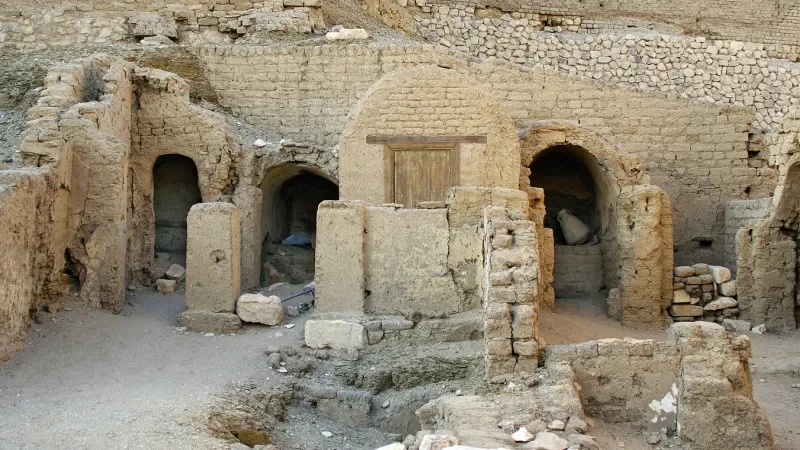
Step back in time to Deir El Madina, an archaeological gem flourishing during the New Kingdom (1550–1070 BCE). This village served as the home to the highly skilled artisans responsible for crafting the Luxor tourist attractions including the elaborate tombs of pharaohs like Tutankhamun and Seti I. Walk the well-preserved streets and enter the workshops, where intricate hieroglyphs and vivid paintings provide a window into the daily lives of these craftsmen. This UNESCO World Heritage site encapsulates the essence of community life and artistic excellence that thrived in the shadow of the Valley of the Kings.
Location: PJH2+37, Al Qarna, Luxor Governorate 1340412, Egypt
Builder: Thutmose I
Function: Residential village for artisans constructing pharaohs' tombs
Material: Mudbrick houses and temples with artistic detailing
Opening Hours: 6 am to 5 pm
Time Needed: Allow 1-2 hours for a detailed exploration
Entry Fee: Covered by general West Bank or Luxor pass
Special Attractions: Well-preserved houses and temples depicting the daily life of ancient workers
Suggested Read: Best Shopping Malls in Cairo: A Dream Come True for all Shopaholics
8. RAMESSEUM III Temple: Where Ramses' Grandeur Preserved

Immerse yourself in the grandeur of the RAMESSEUM III Temple, commissioned by Ramses II in the 12th century BCE. This colossal structure, covering an area of over 25,000 square meters, was dedicated to the worship of the pharaoh himself and is among the Luxor top attractions. The temple's imposing statues, towering columns, and intricate reliefs depict the military victories and religious fervor of Ramses' reign. Witness the echoes of ancient rituals as you explore this architectural masterpiece, which has withstood the test of time.
Location: Edfo, Luxor Governorate 1341711, Egypt
Builder: Constructed in honor of Ramses II.
Function: Mortuary temple for Ramses II.
Material: Sandstone and limestone.
Opening Hours: 6 am to 5 pm
Time Needed: Approximately 1-2 hours for exploration.
Entry Fee: Included in general West Bank or Luxor pass.
Special Attractions: Colossal statues and remnants of grand architectural design.
Suggested Read: Best Mosques in Egypt: Discover the Moral Peace and Meet the Holy Divine
9. Colossi Of Memnon: Dawn with the Ancient Guardians
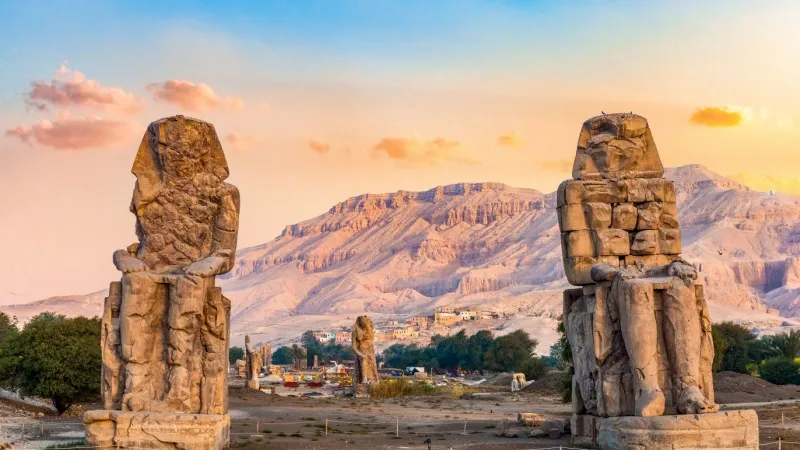
At the break of dawn, encounter the Colossi of Memnon, monumental statues standing proudly on the Theban Necropolis, which is one of the best things to do in Egypt if you are a history enthusiast and mystery lover. These twin statues of Amenhotep III, reaching a height of 18 meters, once adorned the entrance of his mortuary temple. Marvel at the colossal scale and detailed craftsmanship that has endured for over 3,400 years. The Colossi, despite losing their original context, remain as sentinels guarding the Valley of the Kings, one of the best places to go in Luxor, creating a powerful silhouette against the rising sun.
Location: Mortuary Temple of Amenhotep III
Address: Thebes and its necropolis, Al Qarnah, Luxor Governorate 1341703, Egypt
Builder: Amenhotep, son of Hapu
Function: Originally part of Amenhotep III's mortuary temple.
Material: Massive sandstone statues.
Opening Hours: 6 am to 5 pm
Time Needed: 30 minutes to 1 hour for a brief visit.
Special Attractions: The statues are associated with a mysterious morning sound.
Suggested Read: Top Places to Visit in Giza: Popular Tourist Sites on Magnificent Nile
10. Luxor Museum: Artifacts of Opulence and Intrigue
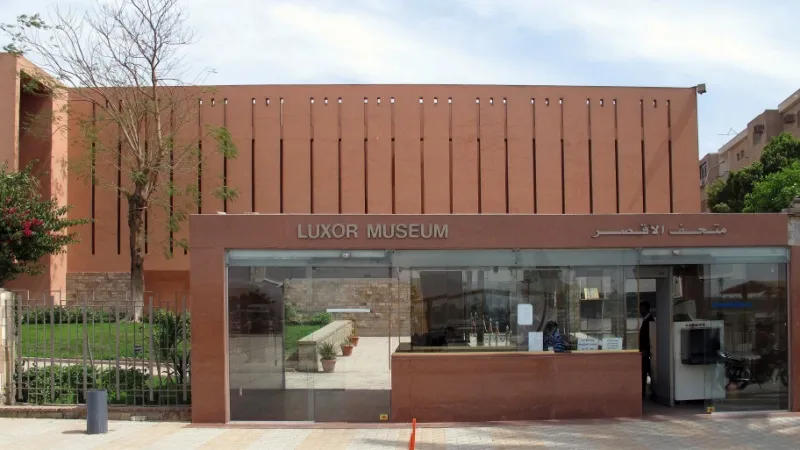
Step into the Luxor Museum, one of the best Luxor tourist attractions, inaugurated in 1975, and embark on a captivating journey through the epochs of ancient Egyptian history. Admire treasures ranging from the Old Kingdom to the Mamluk period, including the dazzling jewelry of Tutankhamun and the gracefully carved statues of Amenhotep III. The museum's carefully curated exhibits provide a comprehensive narrative of the cultural, artistic, and religious aspects of this illustrious civilization. Each artifact unfolds a tale, inviting you to immerse yourself in the opulence and intrigue of ancient Egypt.
Location: PJ5V+2RV, Kornish Al Nile, Luxor City, Luxor, Luxor Governorate 1362503, Egypt
Builder: Constructed by the Egyptian government
Function: Museum showcasing artifacts from Luxor's ancient sites
Type of Museum: Egyptology, history museum, archaeological museum
Material: Modern museum building housing ancient artifacts
Opening Hours: 9 am to 2 pm and 5 pm to 10 pm
Time Needed: 2-3 hours for a comprehensive exploration
Entry Fee: Requires a separate entrance fee; prices may vary
Special Attractions: Iconic artifacts like the golden mask of Tutankhamun and statues from Luxor's temples
Suggested Read: Top Museums in Cairo: Discover the Ancient Era of Egypt
In the heart of Egypt, Luxor emerges as a captivating blend of ancient wonders and modern allure. From the monumental Karnak Temple to the tranquil beauty of the Nile, places to visit in Luxor paint a vivid canvas of history. The Valley of the Kings whispers tales of pharaohs, and the vibrant markets offer a taste of local culture. Luxor, with its warm embrace of tradition and a commitment to visitor safety, invites exploration. As the sun sets behind the majestic temples, the echoes of a glorious past linger, inviting travelers to savor the enchantment of this timeless city during the best Luxor tour packages.
Places to Visit in Luxor FAQs
The Valley of the Kings is a burial ground for pharaohs, offering insight into ancient Egyptian funerary practices through tombs adorned with hieroglyphics and treasures.
Use taxis, guided tours, or horse-drawn carriages for efficient transportation between sites. Walking is also practical for nearby attractions.
Visit during the winter months (October to April) for milder temperatures, providing a more comfortable exploration experience.
Adhere to site guidelines, refrain from touching ancient structures, and comply with photography restrictions. Follow instructions provided at each location.
Luxor Temple features colossal statues, grand colonnades, and the Sphinx Avenue, seamlessly blending religious and civic architectural elements.
Yes, enjoy a hot air balloon ride for a unique family perspective or attend a traditional dance show in the evening for entertainment.
While independent exploration is possible, guided tours enhance the experience by providing historical context and insights into sites like the Valley of the Kings.
Plan a 3-4 day stay to fully explore Luxor's attractions, allowing time for major historical sites, a Nile cruise, and cultural immersion.

